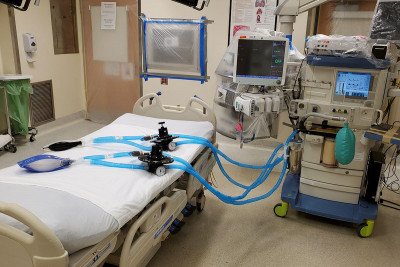
A new mechanical ventilator system designed by anesthesiologists and biomedical engineers at Memorial Sloan Kettering Cancer Center (MSK) has the ability to support two intubated patients simultaneously while compensating for variability in each patient’s size, weight, and pulmonary needs. This innovative design could potentially double the number of ventilators available by superseding the imprecise science typically used to overcome these variations.
When using a single ventilator for multiple patients during prolonged periods of mechanical ventilation, the inability to individualize each patient’s tidal volume – the amount of air moved into and out of the lungs – can lead to ventilator-induced lung injury, jeopardizing the survival of both patients. For this reason, numerous national societies have warned against splitting one ventilator for multiple patients.
The new MSK-designed system, dubbed the MSK Octopus, includes an adjustable pressure regulator for each patient, providing the clinician the ability to independently set the tidal volume for each patient. An additional flow circuit with a breathing bag is added to the system to allow pressure-equalization. This extra circuit allows the ventilator to maintain sufficient flow using elevated pressure, while independently down-regulating each patient’s pressure so as not to cause lung injury.
To date, the MSK Octopus has only been used on test lungs. A diagram of the system is publicly available.
“The MSK Octopus is intended to be a short-term fix to help address a potential lack of ventilators as a consequence of the ongoing COVID-19 pandemic,” said Grant H. Chen, MD, an anesthesiologist at MSK and one of the inventors.
Visit the MSK COVID-19 Innovation Hub for more information on how MSK is prioritizing safety and mitigating the spread of COVID-19 by building on the practices developed in the medical community and creating new innovations.